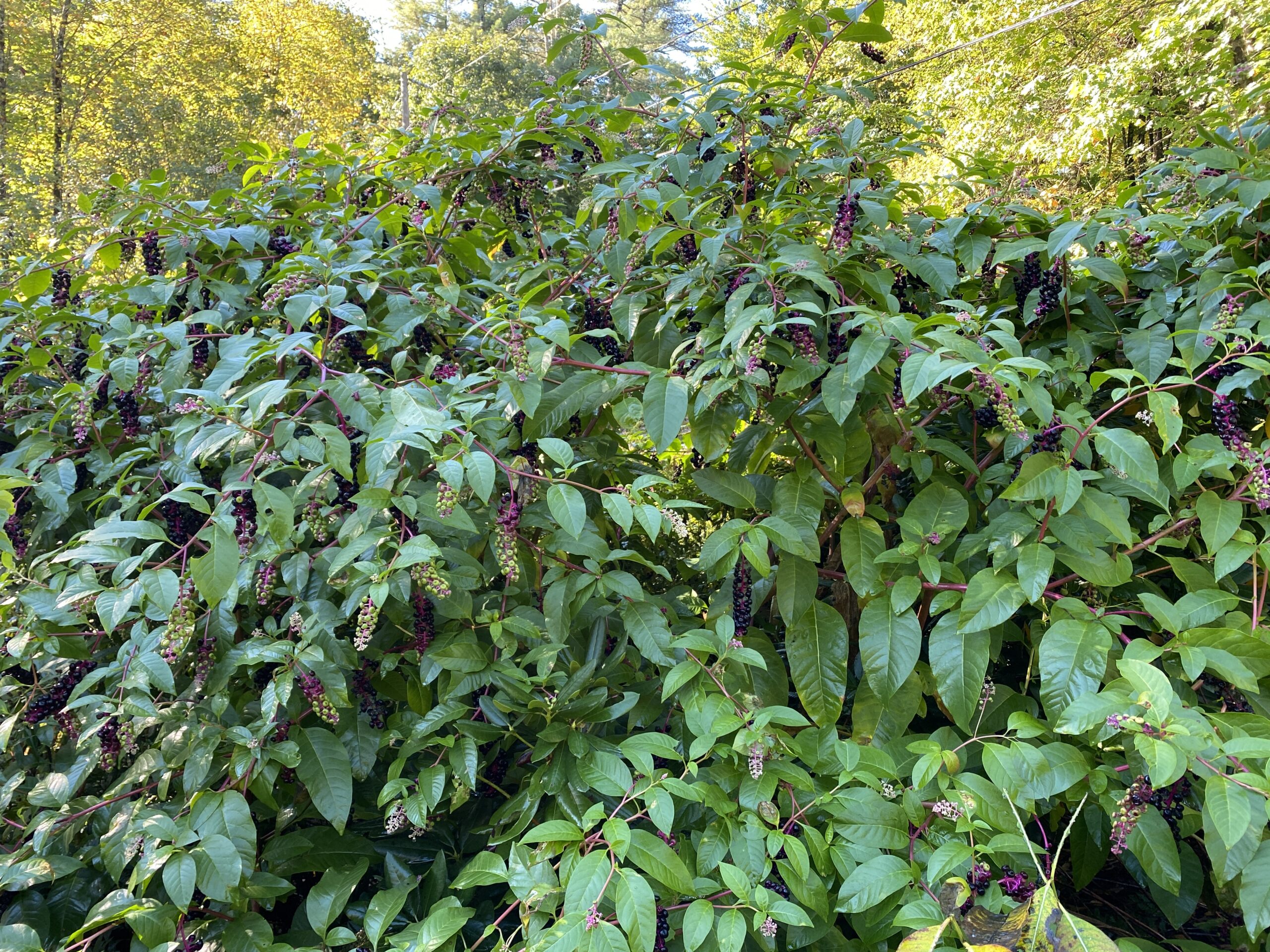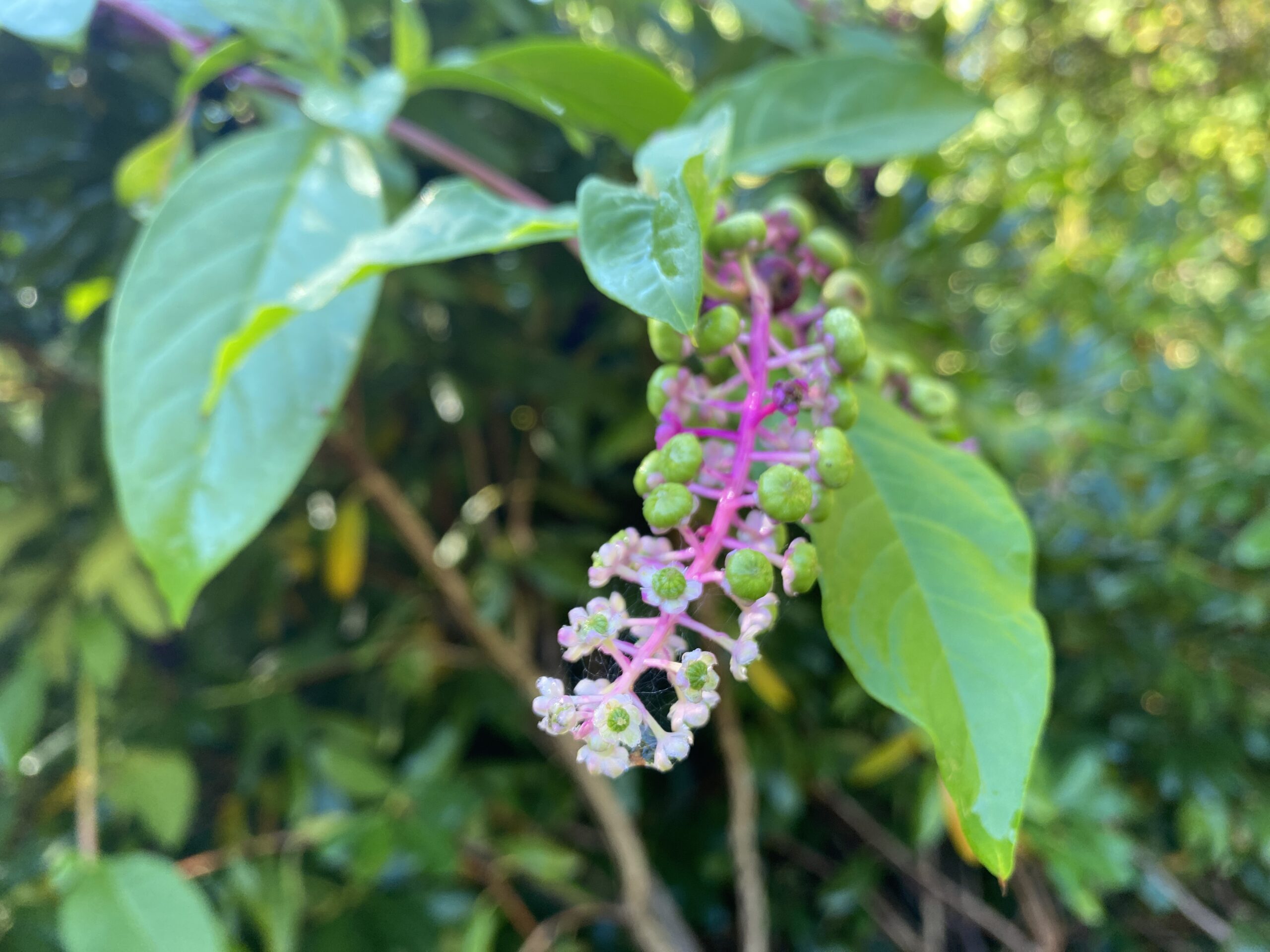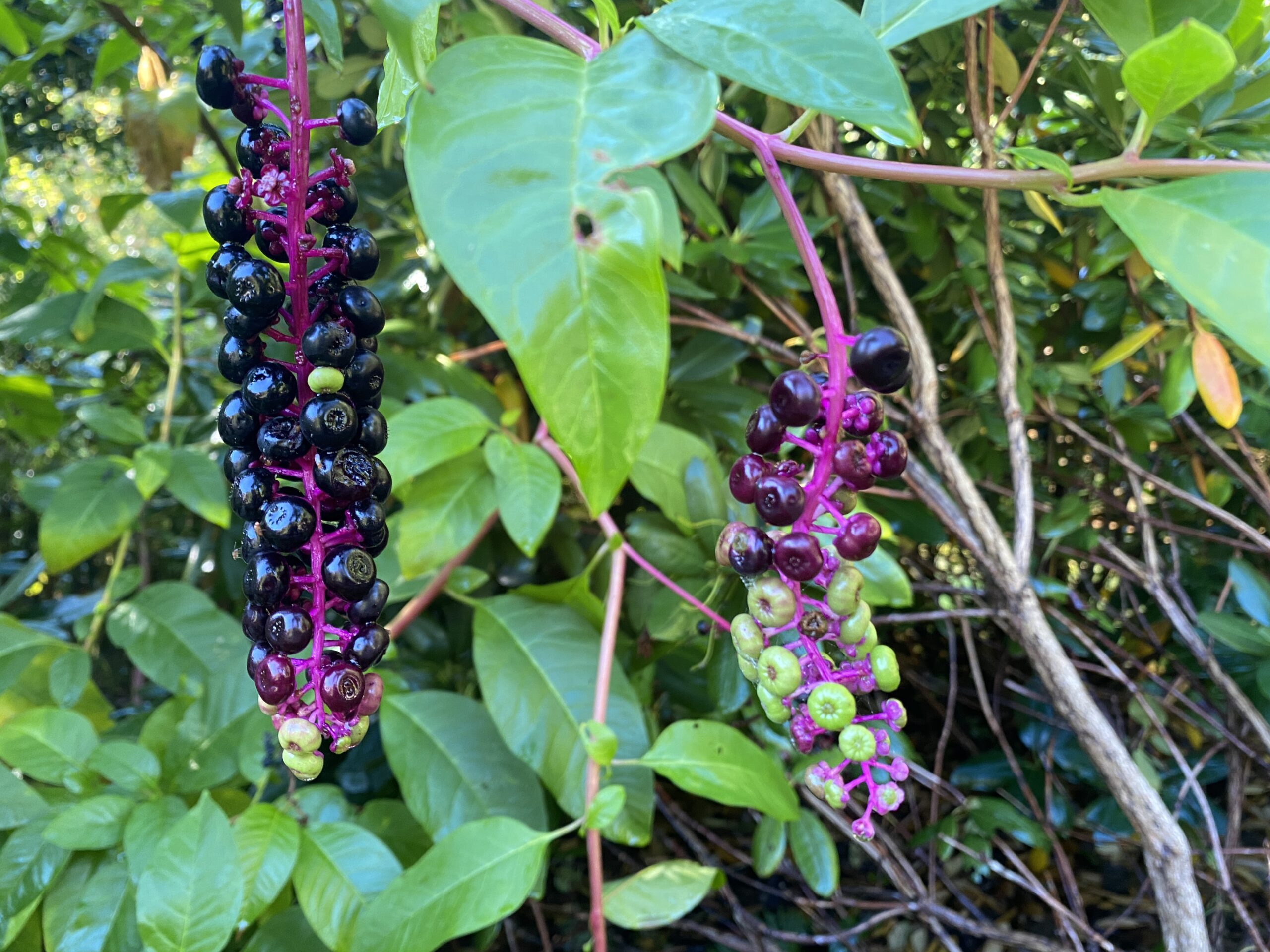Sunday, September 28, 2024
By far, the most tropical-looking plant in our yard is pokeweed, Phytolacca americana. My observation holds true after researching its relatives in the genus Phytolacca, which all live in warmer climates than our pokeweed, including southern U.S., Hawaii, Central and South America, southeast Asia.
Pokeweed is known by many other names: American pokeweed, pokeberry, dragonberries, pigeonberry, inkberry, poke sallet, puccoon, pocan, and likely others. The names reflect various uses: as a dye, food for doves and other birds, medicinal. My favorite name is dragonberries.
Pokeberry is an herbaceous perennial, growing from a taproot to nearly ten feet tall and just as wide by early fall, when the fruits start to ripen. The lush foliage combined with the stunning fruits give this plant its tropical vibe. The somewhat inconspicuous small white flowers grow on pink stems in a cylindrical raceme that hangs down from leafy branches.
The raceme of flowers becomes a cluster of green berries that turn a stunning dark purple.
Many people consider pokeberry a weed. The plant, including the berries (which also stain, hence the name inkberry), is poisonous to mammals, including humans, so that doesn’t help its reputation. But I find it an exceptionally beautiful addition to our yard. I can easily pull small seedlings when they pop up where I don’t want them, just like any weeding that I do in our gardens. Once established pokeberry it is harder to remove, so plan ahead and let pokeberry flourish in a suitable place. In our yard, cardinals, robins, and catbirds appreciate the cover and the berries.



